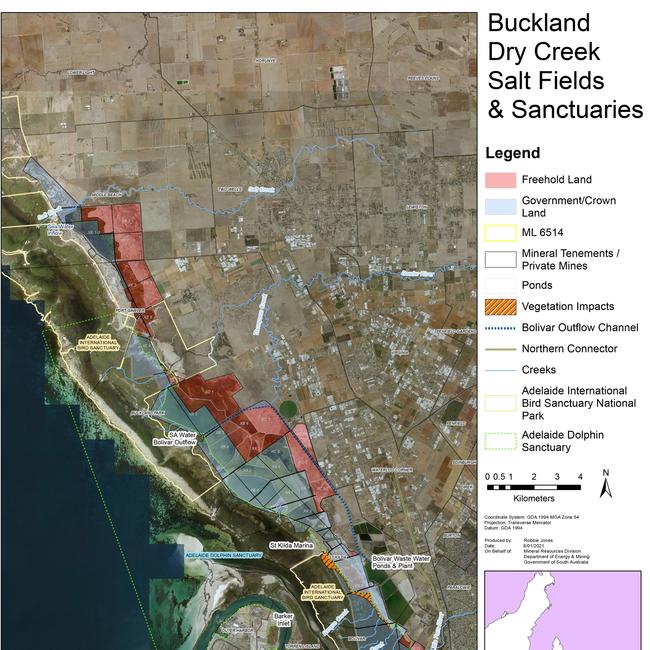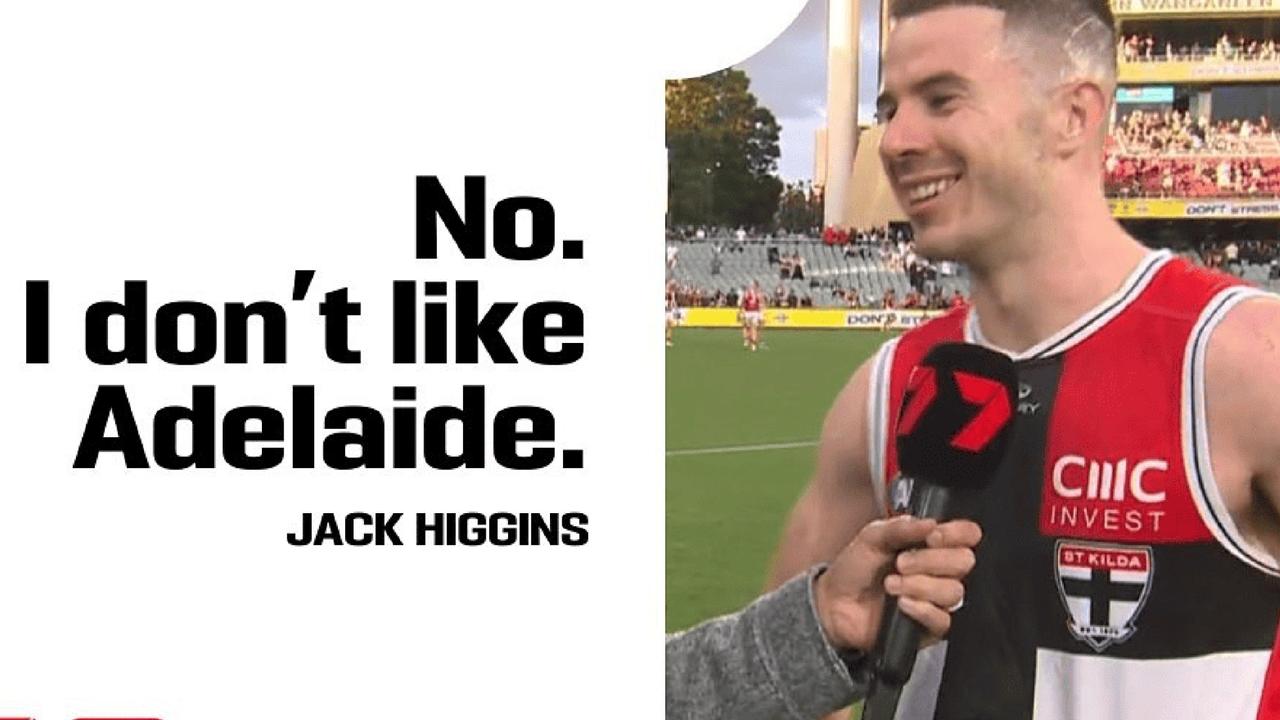Pumping underway at St Kilda mangroves and saltmarsh
It looks like pumping is finally underway to move acidic brine away from the St Kilda mangrove trail, but a local scientist warns it isn’t enough.

SA News
Don't miss out on the headlines from SA News. Followed categories will be added to My News.
Pumping to move acidic brine away from the dead mangroves and saltmarsh at St Kilda is too little, too late for the alliance of scientists and conservation groups, which has staged a vigil at Parliament House to mark World Wetlands Day.
At least 10 hectares of mangroves and 35 hectares of saltmarsh near the St Kilda Mangrove Trail died late last year, after disused and dry salt evaporation ponds were filled and then slowly leaked.
The State Government says experts are now working with the owner, Buckland Dry Creek, to “stop further impact, promote conditions for recovery of the affected areas, and establish long term environmental stability for the mangrove and wider ecosystem”.
The Energy and Mining Department is leading the cross-government response and the latest update shows “pumping to remove hypersaline water to reduce the impact to mangroves” in two January photographs.

But St Kilda resident and scientist Peri Coleman, of Delta Environmental Consulting, said the photos were “misleading” because the pump was on between ponds 9 and 10 only in short bursts.
“At the moment that pump that you see running just moves the brine from one pond to another that is still leaking,” she said.
“So the Department for Energy and Mining appears to be engaged in some obfuscation here, that is possibly the most polite way I can describe that.”
Acting director of mining regulation Paul De Inno said pumping of brine began on January 11 after the direction to remove water from the ponds south of St Kilda issued on December 24.
He said there were now people on site every day, monitoring and making sure the situation was managed as best as it could be.
A spokesman said the there were positive signs that the situation was stabilising and a formal investigation was continuing.

The St Kilda Mangroves Alliance will wear black arm bands and pile dead trees on the steps of the House at 11.30am Tuesday February 2 as they mourn their loss and call for swift action to prevent further damage.
Conservation Council chief executive Craig Wilkins said there was a lot of grief in the community.
“While the immediate focus is on stopping the damage, the Alliance is calling for best practice remediation to be put in place now for the recovery and long-term health of the St Kilda Mangroves,” he said.
“We need a faster, more effective and more co-ordinated response to reverse the current crisis and the restore the area to long term health.”

ST KILDA MANGROVES
The Dry Creek salt mine was established under the Playford Government in the 1930s to produce salt and secure South Australia’s independent production of alkalis after the First World War.
Ponds were built up to the 1980s which now stretch across over 30km of Adelaide’s northern coast.
For much of the past decade mining operations have ceased, and many ponds were dried out and stabilised.
What has killed the mangroves and saltmarsh in 2020?
In the summer of 2019–20 it appeared that brine was being pumped into the dry ponds south of St Kilda. The ponds leaked, flooding the area with hypersaline (very salty) and acidic brine.
By July 2020 the mangroves began to appear stressed and ‘dusty’, and by September 2020 they were dead. Over 10 hectares (5 footy fields) of mangroves and over 35 hectares (17 football fields) of saltmarsh were then killed. Two estuaries are impacted.
What makes the area unique in the world?
The area is one of the vital ecosystems of the world.
It is home base to over 27,000 shore birds, including several endangered species, that feed on insects, fish and crustaceans before flying over 11,000 km north to Siberia every year to mate and breed, then return to Adelaide to rest and feed. The bird’s flight path is known as the East Asian-Australasian Flyway (EAAF) which passes through 22 countries.
Ecosystem collapse of this area will hasten ecosystem collapse of the global flyway.
Locally, it is the longest continuous conservation area in greater Adelaide, home to 263 unique fauna and flora species.
The estuaries provide fish passage for congolli and galaxias to visit the sea to breed each year, the saltmarshes provide feeding grounds for the juvenile fish, and mangroves provide a sheltering nursery for many commercial and other fish species.
The area is an important cultural site of Kaurna people and in 2016 was established as the Adelaide International Bird Sanctuary National Park; Winaityinaityi (all the birds) Pankara (home).
When flourishing, the area is a fresh air factory for Adelaide - removing carbon from the atmosphere and producing oxygen.
This damage has turned the area into a 7km carbon factory - releasing carbon into the atmosphere and contributing further to global warming.



